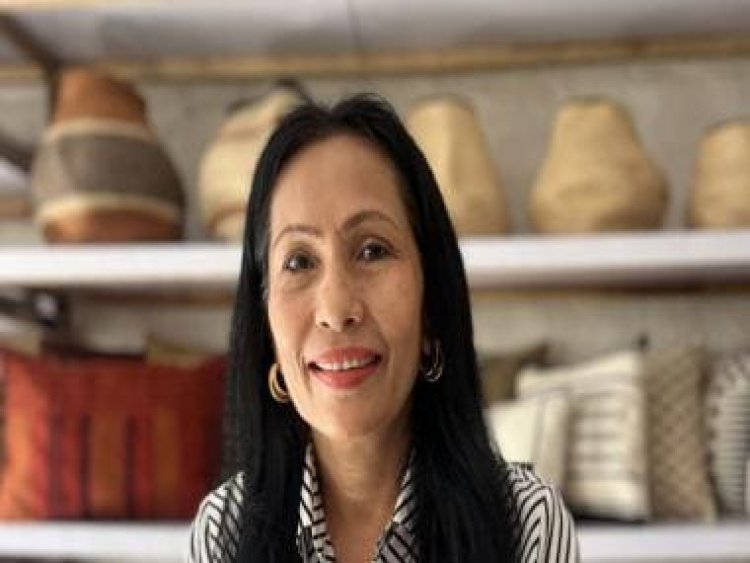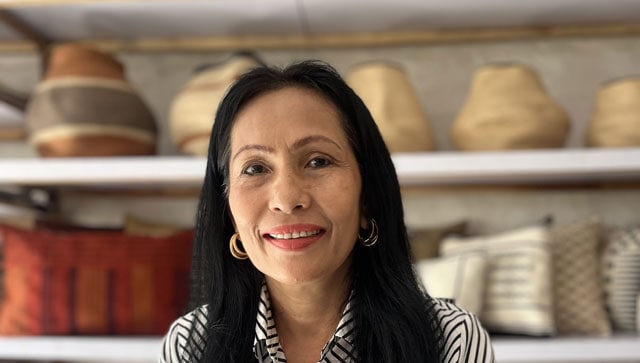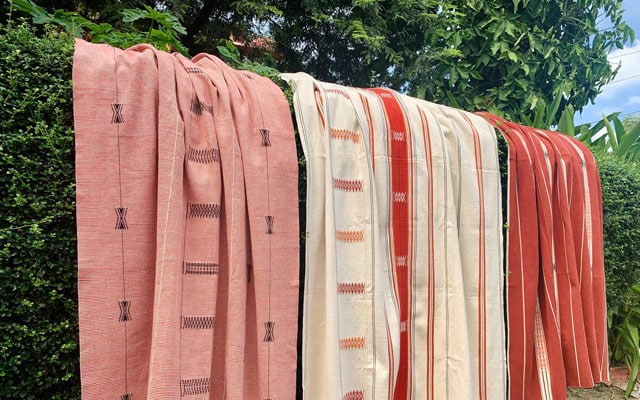Top Notch | Heirloom Naga's Jesmina Zeliang on why being profitable means supporting more indigenous women
Top Notch | Heirloom Naga's Jesmina Zeliang on why being profitable means supporting more indigenous women

I AM embarrassed this is my first-ever interview with Jesmina Zeliang, the founder of one of the most notable brands out of India – specifically Northeast India. I truly have been remiss, Zeliang’s Heirloom Naga is 30 years old, and its subtle designs can be spotted from across the room. It’s ironic to learn that Zeliang, an untrained designer, started working with textiles of Nagaland literally as a balcony project. It’s now sold in more than 30 countries worldwide, and is collaborating with Christian Louboutin on a very special project.

“Leave alone a designer, I had no intentions of becoming an entrepreneur,” Zeliang tells me. “For a long time I would be sheepish when people asked me who the designer of my products was, I would just look down, because I had no training. But it all happened so spontaneously and here we are,” she smiles.
Weaving is something women in the Northeast would do at home, just the way most mothers and grandmothers would knit or sew at home. Interestingly, the Northeast is famous for a back-strapped loin loom. It’s much smaller, and can sit on a desk or a kitchen table, with a strap that goes behind the back. Its tiny size allows for women to weave at home, as an in-house activity, which is why and unusually most weavers here are the ladies. “It gives liberty to women to weave as per her wishes, she really is the master of her own work,” Zeliang says. The loin loom, or the back loom, is indigenous to the Northeast, but also Guatemala, Mexico, Philippines and Thailand. “It’s a very basic loom but the work that comes off it is incredible. Everything is picked with bamboo sticks. Different weavers have different strengths depending on their body types. If I am strong, my weaves will be taut. Now we have some standardisation for exports but it has been Herculean to expect tolerance from the international market.”

“Nagaland is one of the most stylish places in India. We have 17 major tribes and many more sub-tribes. Each tribe has its own cloth, depending on positions of power and adulthood. In my case, I was married into the Zeliang Naga tribe, and it influenced my textiles and motifs. But now we have moved away from traditional motifs and styling.
Zeliang grew up in Dimapur. Her neighbour would be weaving in her verandah, and one lucky day, Zeliang hopped over and asked her to make some cushion covers inspired by the Kutch label Gurjari, which was all the rage then. “This was the genesis of my textile journey. We incorporated a typical feature in the cushion covers, a braid tassel, and it became very popular. I had many failed business attempts but finally textiles clicked. I just thought it was a sin to sit around and do nothing,” she smiles.
She was also a single mother, and needed to work. “I went to one of the Surajkund crafts melas in Faridabad, it was my only B2C participation. I took my cushion covers and my basketry too. All the lifestyle queens of Delhi and Mumbai were around, and my booth was empty by the second day,” she remembers. Her first window display was at a lifestyle store at the swanky Santushti mall in New Delhi. She got great support from the late Shyam Ahuja, India’s great exporter of dhurries and textiles. “He asked me how many weavers I had and I lied and said 50, when I had only five. He told his assistant to give me enough work so none of the looms were idle. I also started selling out of Fabindia, so I was busy through the 1990s.

Heirloom Naga has a presence in the US, UK, France, Australia, Japan, South Africa, and UAE. “You have to understand Nagaland. No one wants to come here and invest in our state, so our development is very sluggish. We have zero industry. The cottage industries – like weaving and basketry (Zeliang also runs a cane label called Cane Concepts)– keeps our home fires burning,” she explains. “People are obsessed with cheap Chinese stuff and I had to educate them why handmade is so special.”
Zeliang works with more than 50 clusters and has 450 women who only work on export orders. “If I may show off, we are now working with Christian Louboutin, we are making panels for his new hotel in Portugal. He came and stayed with me for three days. We are also working with Banana Republic, so it’s nice that manufacturers are looking at artisanal communities. We have made almost 3-foot cushions for them,” she adds.

Zeliang, who also runs a heritage hotel in Kohima, is committed to more brand collaborations. “I don’t believe in ecommerce, there is too much plagiarism,” she says. “We are very profitable as an export house or working directly with Indian designers. We need to ensure we can support education and healthcare for our women,” she explains.
Namrata Zakaria is a seasoned writer and editor, and a chronicler of social and cultural trends. Her first book, on late fashion designer Wendell Rodricks’ Moda Goa museum, is due to be published shortly. Zakaria is especially known for her insider’s take on fashion, luxury and social entrepreneurship in India. Her writing is appreciated for shaping opinions, busting myths, making reputations and sometimes breaking the odd career. Zakaria is also involved in putting together philanthropic efforts in the field of economic and environmental sustainability.
Read all the Latest News, Trending News, Cricket News, Bollywood News, India News and Entertainment News here. Follow us on Facebook, Twitter and Instagram.
What's Your Reaction?



























































